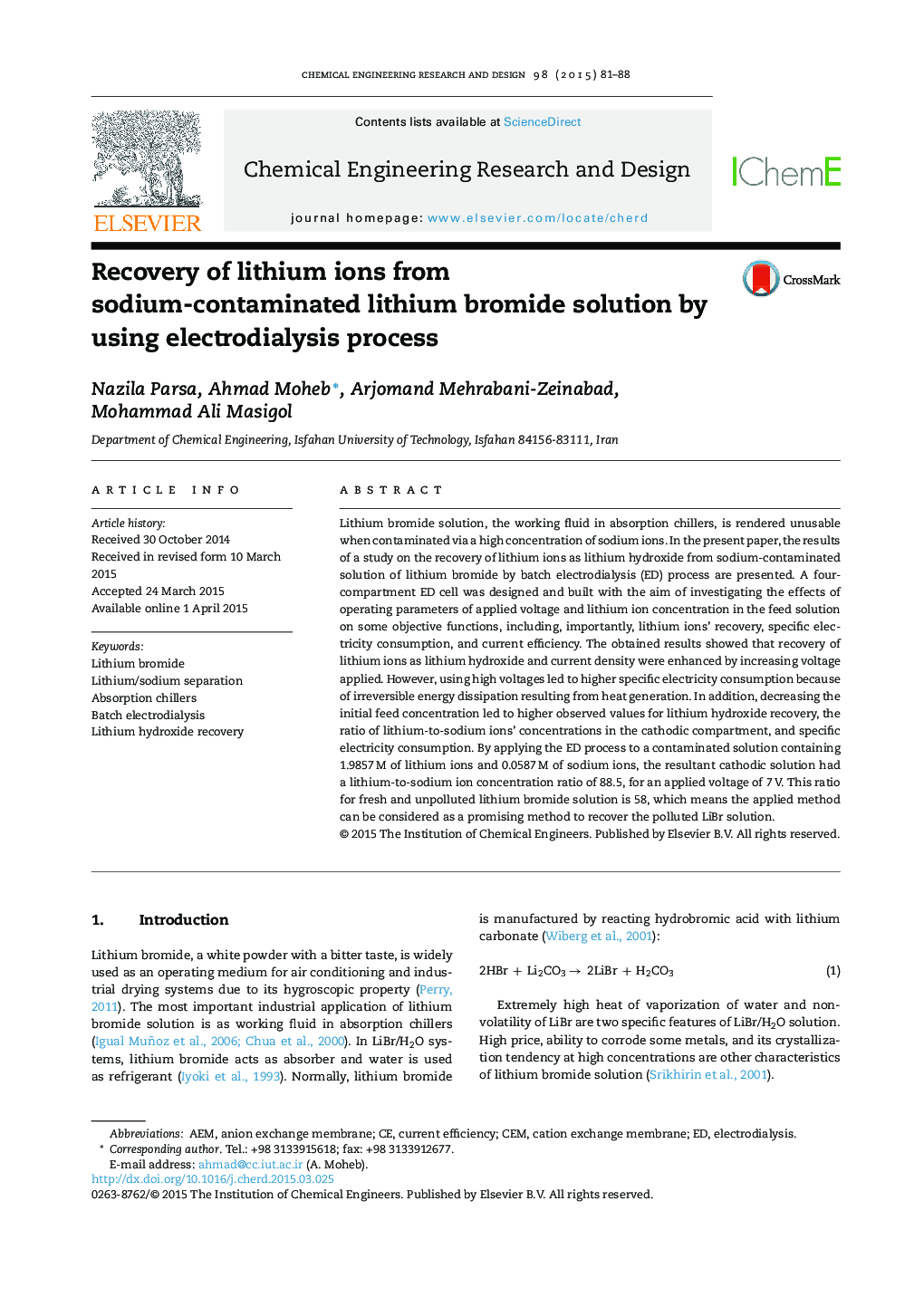| کد مقاله | کد نشریه | سال انتشار | مقاله انگلیسی | نسخه تمام متن |
|---|---|---|---|---|
| 620528 | 1455170 | 2015 | 8 صفحه PDF | دانلود رایگان |
• ED process was used for relative separation of Li+ and Na+ ions.
• Li+ ions were recovered from LiBr aqueous solution contaminated with Na+ ions.
• 20% of Li+ ions were recovered as useful and highly pure aqueous solution of LiOH.
• Using lower initial concentration was in favor of more efficient ions separation.
Lithium bromide solution, the working fluid in absorption chillers, is rendered unusable when contaminated via a high concentration of sodium ions. In the present paper, the results of a study on the recovery of lithium ions as lithium hydroxide from sodium-contaminated solution of lithium bromide by batch electrodialysis (ED) process are presented. A four-compartment ED cell was designed and built with the aim of investigating the effects of operating parameters of applied voltage and lithium ion concentration in the feed solution on some objective functions, including, importantly, lithium ions’ recovery, specific electricity consumption, and current efficiency. The obtained results showed that recovery of lithium ions as lithium hydroxide and current density were enhanced by increasing voltage applied. However, using high voltages led to higher specific electricity consumption because of irreversible energy dissipation resulting from heat generation. In addition, decreasing the initial feed concentration led to higher observed values for lithium hydroxide recovery, the ratio of lithium-to-sodium ions’ concentrations in the cathodic compartment, and specific electricity consumption. By applying the ED process to a contaminated solution containing 1.9857 M of lithium ions and 0.0587 M of sodium ions, the resultant cathodic solution had a lithium-to-sodium ion concentration ratio of 88.5, for an applied voltage of 7 V. This ratio for fresh and unpolluted lithium bromide solution is 58, which means the applied method can be considered as a promising method to recover the polluted LiBr solution.
Journal: Chemical Engineering Research and Design - Volume 98, June 2015, Pages 81–88
